How to remove the air conditioner yourself without losing Freon: a detailed guide to dismantling the system
Air conditioning units for domestic and office use, as well as those used in the industrial sector, as a rule, operate on a specialized refrigerant - freon. This chemical substance can take on a different state - liquid or gaseous, depending on parameters such as pressure and temperature.
The practice of operating air conditioners does not exclude the need for dismantling, for example, for repair. In such cases, the owner begins to study information on how to remove the air conditioner yourself without losing freon, so that you can try to fix the breakdown without involving specialists. We will talk about how this can be done with our own hands in our material.
The content of the article:
What you need to know about the refrigerant air conditioner?
Unfortunately, failure of air conditioners, like other equipment, is not uncommon. Therefore, a potential master, even a "home" one, will need theoretical and basic information regarding the same freon, if he plans to install, dismantle or repair the air conditioner.
Modern air conditioning devices, household or office, use refrigerant for the work, the brand of which is indicated in the air conditioning certificate, as well as directly on the equipment case.

Therefore, the first thing you need to know for a home master is, of course, the brand of the refrigerant used in the system. The brand of freon is determined by reading the information on the technical plate of the device, which is always present on the housing of the outdoor module.
What is this information for? For the correct execution of installation (dismantling) and commissioning.
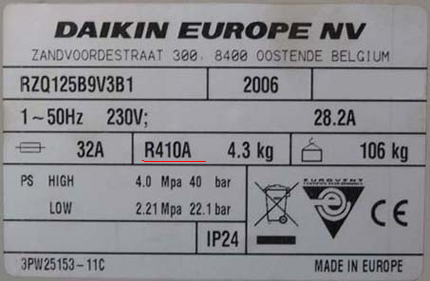
Freon is a very fluid substance. That is, in the presence of even a slight violation of the tightness of the system, this refrigerant completely comes out. This class of substances refers to chemicals that can destroy the ozone layer of the atmosphere. Accordingly, the release of freon into the atmosphere is unacceptable, in principle, even in small volumes.
When installing a new air conditioner, the risk of refrigerant leakage is minimal, but the process requires a certain technological approach. However, a completely different situation is when dismantling the system. We will talk further about how to remove the air conditioner so that freon does not leak from it.
Dismantling the air conditioner with Freon preservation
Consider two options for dismantling a household split system with full preservation of freon, which potential users of air conditioners have to deal with:
- Dismantling the working installation.
- Dismantling a failed installation.
Both options are the reality of the existing practice of operating household and other air conditioners.
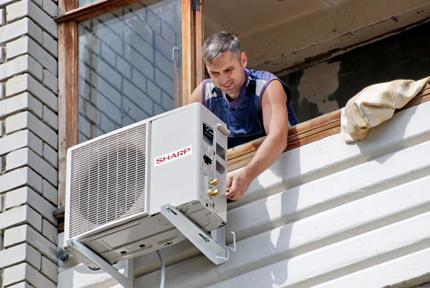
By the way, the second option, when you have to dismantle a faulty machine, is even more common than the first. Working air conditioners are dismantled quite rarely, allowing the machines to work out the entire period declared by the manufacturer.
Option # 1 - dismantling of working equipment
This case of dismantling is usually associated with the user moving to another place of residence (work, etc.). True, sometimes they are going to dismantle the equipment in connection with the replacement with a more advanced (modern) model.
Consider the main stages of the dismantling of the system with the preservation of the refrigerant.
Stage # 1 - pumping out freon from the system
Whatever the purpose of dismantling the working equipment, the air conditioner must first be "mothballed."
This term is intended to:
- disassembling the system into separate modules;
- disconnection linear pipelines;
- disconnection of electrical connections;
- saving freon in the system.
With a working (fully functional) air conditioner, it is relatively easy to carry out the items marked in the list. It is enough to pre-pump out the freon present in the evaporator (part of the indoor module) and in the copper tubes connecting the indoor unit to the outdoor unit.
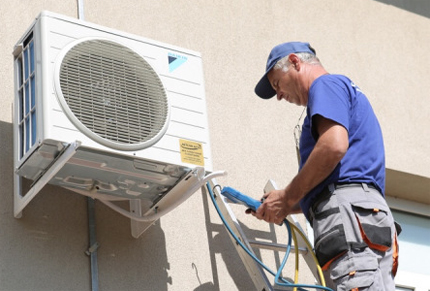
It should be noted: in this embodiment, the refrigerant is pumped out completely by local means - in other words, directly by the air conditioning compressor.
User actions are as follows:
- Close the valve for supplying freon to the evaporator (on a smaller tube).
- Leave open the valve on the vapor exhaust line (on the larger diameter tube).
- Turn air conditioning on cooling mode.
- Wait for the moment the system shuts down automatically (at low pressure).
- Close the valve on the vent line.
So, in general terms, a technology looks like that demonstrates how to properly remove a household air conditioner while maintaining freon in one of the system modules (outdoor module).
After performing this procedure, it remains only to disassemble the air conditioning unit into separate modules for transportation to another installation site.
Stage # 2 - disassembly into modules of a household split system
Next, we consider the sequence of actions for dividing the air conditioner into modules. But this is subject to the above procedure for pumping freon compressor.
So, it is recommended to connect the gauge station to a fitting specially designed for filling / pumping freon.This service port (named according to standard specification) is part of the design of a gas line shut-off valve (larger diameter line). The fitting is closed with a brass screw plug, which must first be removed.
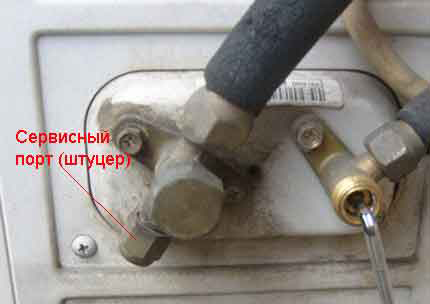
The connection of the manometer station to the service port is carried out through a manometer (manovacuometer), designed to control the low pressure side. On branded appliances, this part of the equipment (including the adapter hose), as a rule, has a blue color. At the same time, the shutoff valve of the station’s blue manometer should remain in the “closed” position.
The service port (fitting) of the low pressure line has a built-in check valve. When a hose equipped with a special threaded head is connected to the fitting, the non-return valve opens by pressing the head bar on the valve stem. Therefore, connecting / disconnecting to the service port (screwing the head) must be carried out quickly, but carefully.
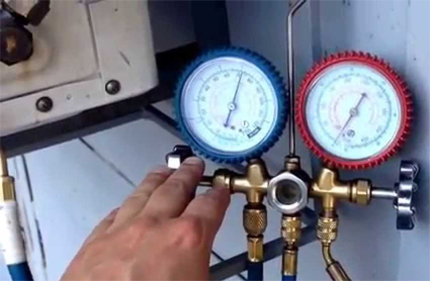
After connecting the pressure gauge will show the presence / absence of pressure in the line. If there is no pressure, you can safely disconnect the pipelines connected to the outdoor unit by unscrewing the union fastening nuts. Otherwise, repeat the procedure for pumping refrigerant to the compressor.
Then, the electricity supplied to the outdoor and indoor units is turned off, as well as the electrical wiring at the terminals of the modules. It is recommended that you number the electrical conductors if you intend to use old wires when new installation.
Stage # 3 - removing blocks from the installation site
The next stage of the operation of dismantling a working household split system is purely physical. You will need to remove the air conditioning modules (external and internal) directly from the installation site.
Located at a low height, the external module of low weight (up to 50 kg) can be removed manually - by two people and using stairs if necessary. At a height, if the external module is located next to the window, manual removal of the device is also quite possible. Although in this case it should be remembered that this is a rather risky and dangerous event.
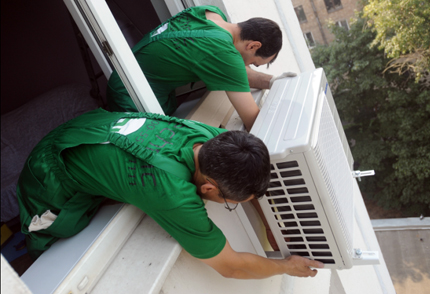
Of course, the dismantling of the outdoor module should be considered a complicated procedure for dismantling from a high height when there are no so-called “cargo” terminals nearby - windows, doors, etc.
For such cases of removal, as a rule, they use additional equipment, and also resort to the services of service departments:
- climbers;
- mechanical towers;
- cranes, etc.
The internal module of a split system usually does not cause any special problems when performing dismantling work. Although, if during the installation of the air conditioning system the transition of pipelines through the wall was carefully sealed, it is necessary to carefully open this area of the wall in order to pull out a part of the linear pipes brought out. Previously, before working with copper linear tubes, the pipeline connection is disconnected directly on the indoor module, and the module itself is removed from the fasteners.
True, sometimes it makes sense not to disconnect the copper tubes from the internal module, dismantling this unit of the system together with the pipelines. However, this option is valid provided that a short (not more than 1.5-2 meters) line connecting the system modules.
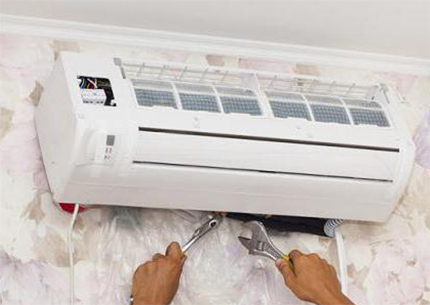
Since the internal module of the household split system is hung on the upper edges of the mounting plate attached to the wall, to remove it, slightly lower the lower edge of the housing adjacent to the wall, and then pull the lower part of the housing towards you. As a result of these manipulations, it will be possible to tear the lower region of the housing from the latches.
Then, if you slightly raise the case up, the internal module of the split system can be easily removed.
If you have any difficulties during the dismantling process and there has been a leak of freon, do not worry. After a new installation of the air conditioner, you have to take care of the correct refrigerant charge.
Option # 2 - dismantling a non-working air conditioner
The situation with the pumping of freon from the system, when the compressor of the domestic air conditioner does not work for one reason or another, is much worse compared to the first option.
At idle compressor air conditioner to realize the function of pumping freon at the local level will not succeed. What to do in such cases? How to remove and disassemble the air conditioner so that the freon does not leak out?
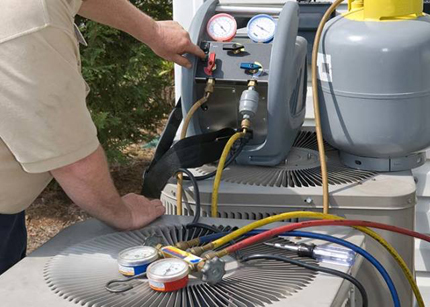
This option of pumping out involves, as a rule, the involvement of service providers, since there is no way to do without using special equipment - a Freon elimination station.
The use of a freon pumping station allows you to completely free the air conditioning system from the presence of refrigerant. Plus, if necessary, the elimination station allows you to additionally create a vacuum inside the circuit of the outdoor module of the dismantled air conditioning system.
A non-working conditioner is freed from freon, consistently applying two methods of eliminating the refrigerant:
- Liquidation of a liquid substance.
- Liquidation of a gaseous substance.
The process of pumping out freon from an inoperative air conditioning system is accompanied in the first stage by actions to collect the liquid phase. Shut-off valves on the linear piping of the air conditioner, at the same time, fully open.
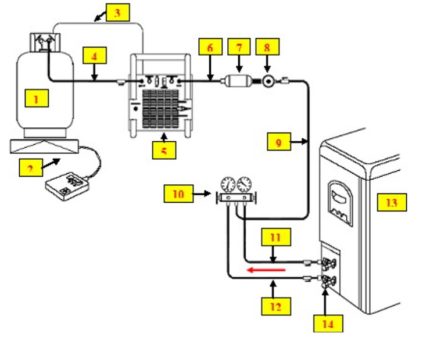
In addition to the shut-off valves, it is also required to open the control solenoid valves provided for by the outdoor module circuit.
To translate into the open position, a corresponding temporary supply voltage is applied to the valve coils (usually indicated on the valve body or in the air conditioner's documentation).
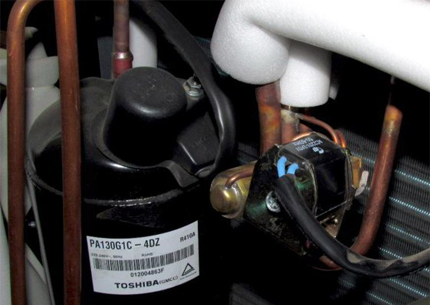
Next, a container (freon cylinder) is installed on the scales, equipped with a two-way (gas and liquid) terminal. The cylinder must correspond to the brand of refrigerant - for example, be suitable specifically for the storage of R22 Freon, if such refrigerant is pumped out.
Connect service tubes to the cylinder and open the corresponding valves (liquid or gas) on the cylinder.
At the next stage of work, they turn on the Freon liquidation station and open the valves of the manometer station, which is previously connected to the refrigerant liquidation circuit from an inoperative air conditioner. The pumping of freon is controlled by a glass gauge station.
In a similar way, gaseous freon is pumped out, with the only difference being that in this case a gas valve is open on the assembly cylinder.
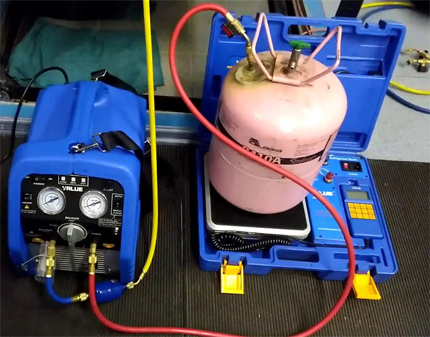
It should be noted that the refrigerant pumping system provides for the filling of the assembly capacity - cylinder, by no more than 80%. As a rule, the operation algorithm of the refrigerant liquidation station is adjusted to this volume parameter. The very design of the liquidation station is equipped with special sensors for monitoring the collected volume.
When the elimination of freon is completed, you can proceed to dismantling the air conditioner.
Conclusions and useful video on the topic
Features of Freon evacuation are clearly shown in the following video:
The dismantling of a domestic air conditioner must always be carried out taking into account the complete evacuation of the refrigerant in order to avoid loss of freon. Meanwhile, quite often in practice the opposite situation occurs when freon is simply dumped into the atmosphere. This approach is unacceptable, as it violates the natural environment of human existence. Simply put, people poison themselves by resorting to the methods of banal draining freon without rules.
Want to share your own experience in pumping freon and give useful repair recommendations? Or do you have questions that we did not address in this article? Ask them to our experts and other site visitors in the comments section below this article.

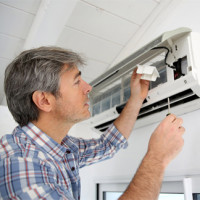 How to disassemble a split system with your own hands: features and procedures
How to disassemble a split system with your own hands: features and procedures 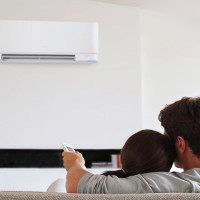 How the air conditioner works: the principle of operation of the air conditioner, its device and technical scheme
How the air conditioner works: the principle of operation of the air conditioner, its device and technical scheme 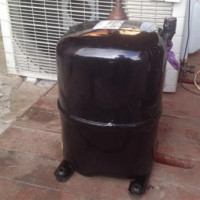 How to check the air conditioning compressor of a split system: nuances of diagnosis + tips for failure
How to check the air conditioning compressor of a split system: nuances of diagnosis + tips for failure 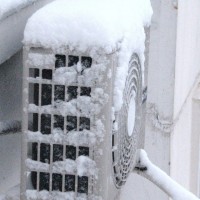 How to start air conditioning after winter: recommendations for caring for air conditioning after frost
How to start air conditioning after winter: recommendations for caring for air conditioning after frost 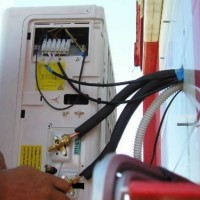 How to connect the air conditioner to the network with your own hands: cable routing + step-by-step instructions for connecting the indoor and outdoor unit
How to connect the air conditioner to the network with your own hands: cable routing + step-by-step instructions for connecting the indoor and outdoor unit  What is precision air conditioning: classification of devices and the principle of operation of units
What is precision air conditioning: classification of devices and the principle of operation of units  How much does it cost to connect gas to a private house: the price of organizing gas supply
How much does it cost to connect gas to a private house: the price of organizing gas supply  The best washing machines with dryer: model rating and customer tips
The best washing machines with dryer: model rating and customer tips  What is the color temperature of light and the nuances of choosing the temperature of the lamps to suit your needs
What is the color temperature of light and the nuances of choosing the temperature of the lamps to suit your needs  Replacement of a geyser in an apartment: replacement paperwork + basic norms and requirements
Replacement of a geyser in an apartment: replacement paperwork + basic norms and requirements